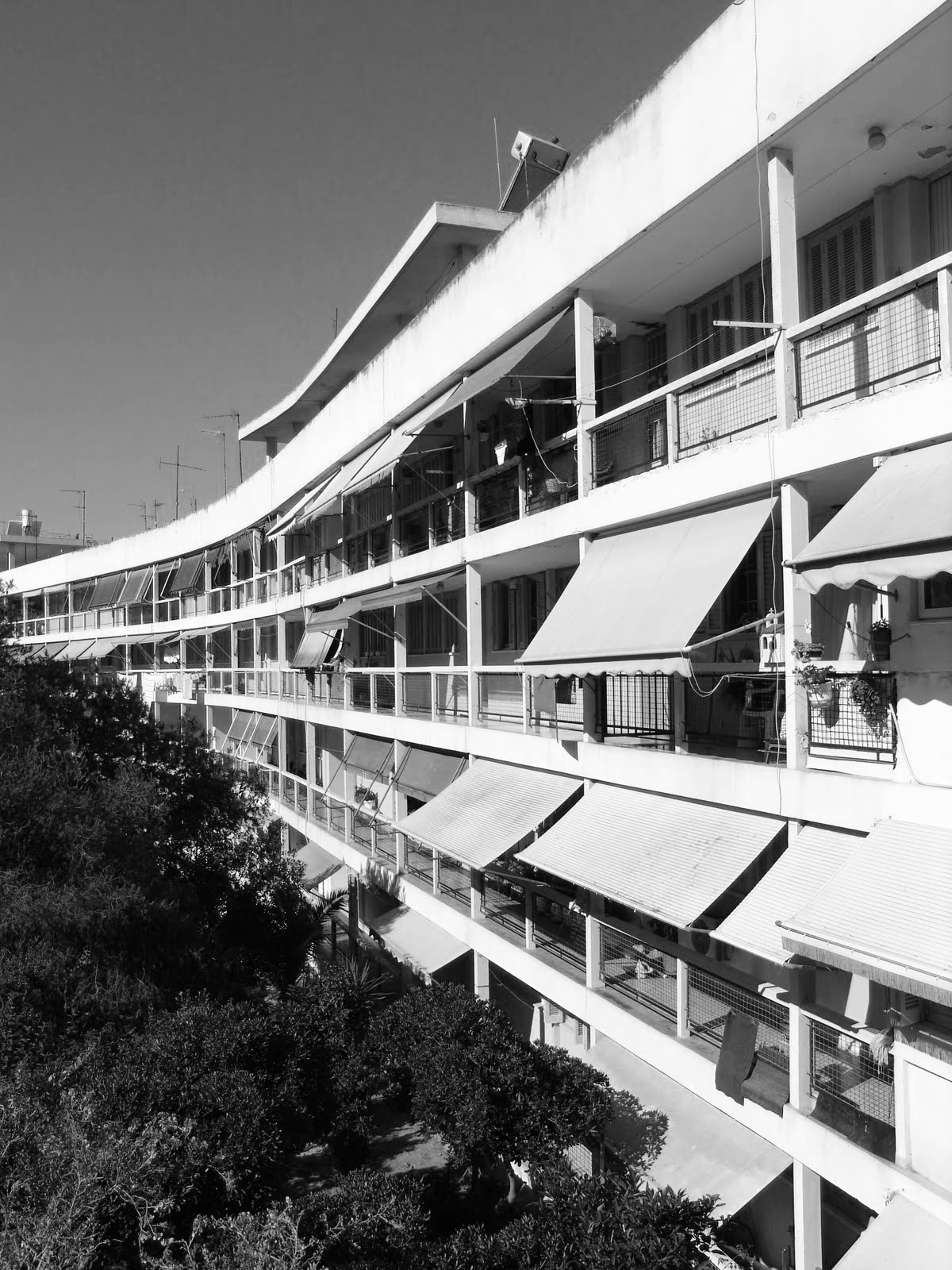Asyrmatos
Contributor
Ca(non)
The Asyrmatos[1] building, designed by Elli Vassilikioti for the Housing Department of the Public Works Ministry and built from 1962-1967, stands on the uneven Attic landscape—that is, both the unequal geographic development of Athens and its rocky topography. Delimiting the foot of Filopappou Hill, it is sited between the park and the residential area of Petralona, an Athenian neighborhood that has been the site of political and social conflict. It adjoins an earlier housing project and a self-help squatter settlement by the displaced refugees from Asia Minor. Asyrmatos’ 55 apartments and eight shops are distributed in five levels, while communal facilities and a rooftop terrace crown the volume. The units, bounded by thin slabs, recede and reveal a scaffolding façade system of balconies and outdoor corridors. A slight bend in the plan structures the long building which is interrupted by a bridge. The curvilinear array choreographs a parallax effect for the vertical elements of the scaffolding. A few voids on the ground and second floor open up the building’s mass, encouraging transversal views for the curious.
But it is this architecture that has slipped through the cracks, even though it has served and keeps serving its purpose as a remarkable public housing project. Its mode of production was too lackluster for it to find a place in mainstream historiographies. And when it appeared in textbooks for prospective architects, it was misattributed or misdiagnosed. The building is not a modernist housing block a la manière de international style. It is a meditation on modernity in Greece, a poor and dependent country living through the traumas of a civil war—a periphery anticipating development toward a glorious future and a present always under construction. But the scaffoldings and voids stand complete and unassuming. Vassilikioti turned developmentalism on its head; she turned anticipation into concrete.
It is the soup du jour of architectural criticism to grant legitimacy to works from multiple peripheries by alluding to their synchronicity and affinity with celebrated works from the center. Itinerant and anxious, but mostly righteous historians travel to places hitherto unknown to them and discover works—buildings, drawings, zines. To them are the operative words here. Transnational, multinational, supranational, international, paranational networks and spheres of influence are being revealed, and seamlessly everything falls back into its place in our established hierarchy of knowledge. They expand the canon, or so they say. This-that-looks-like-that. She-who-studied-there. He-who-learned-from-him. Monsters from the past creep up again; cigar-smoking architects, the master builders who erected cities and penetrated landscapes and produced seminal works of Architecture—always with a capital A. I don’t want your canon, your old
or new.
To put it differently through a metaphor, Asyrmatos has been described as having the shape of a longbow. But with every longbow there is the archer’s paradox; the arrow has to bend out of the way of the bow to eventually find the correct trajectory as it leaves the elastic device. To the untrained eye the arrow seems to be missing the target. But she, as if trained in the art of archery, had calibrated the correction and hit the canon right in the jugular.
- Asyrmatos in Greek means wireless. The area and eventually the building took their name from a nearby transmitting antenna that belonged to the Greek Navy.

(@makriverelis). 2017. “Asyrmatos.” Instagram photo, March 11, 2017